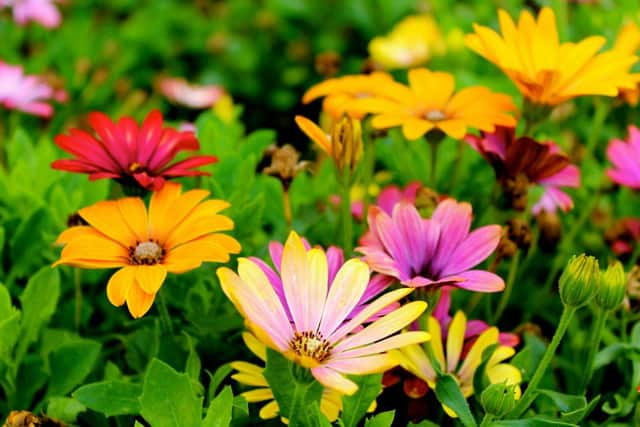Prepare your garden for the vibrant growth of Spring
and live on Freeview channel 276
Understanding the critical steps to prepare your garden for the vibrant growth of spring is essential. After speaking with the expert team at Drainage Channel we found out how you need prepare.
Clean up
To clean up your garden after winter, begin by removing debris like leaves and branches to clear the way. Prune dead or damaged branches from trees and shrubs to encourage healthy growth, and cut back dead foliage from perennials. Early Spring is an ideal time to weed, preventing future growth.


Advertisement
Hide AdAdvertisement
Hide AdRepair garden beds and borders for a neat appearance, and enrich the soil with compost or well-rotted manure. Apply mulch around plants to help retain moisture and reduce weeds. Inspect for pests and take early control measures. Once the cleanup is done and the soil is workable, you can start planting new additions according to your garden's needs.
Finally, ensure your garden tools are clean, sharp, and in good repair for the season ahead. This comprehensive approach will rejuvenate your garden, setting the stage for a productive growing season.
Get your shed prepared
To prepare your shed for the upcoming season, start by thoroughly cleaning it out. Remove any items stored inside and sweep out any dirt, leaves, or debris. This is a good opportunity to sort through tools and materials, discarding anything that's no longer useful or is beyond repair. Next, inspect the shed for any signs of damage, such as leaks, rot, or structural weaknesses, and make necessary repairs to ensure it's watertight and secure.
Organise your tools and equipment, possibly introducing shelves or hooks to maximise space and keep things accessible. Treat wooden parts with a preservative if needed to protect against rot and pests. Lubricate hinges and locks to keep them working smoothly.
Advertisement
Hide AdAdvertisement
Hide AdFinally, take inventory of your supplies and make a list of anything you need to replace or purchase. A well-organised and maintained shed will make your gardening activities more efficient and enjoyable, ensuring everything you need is in good condition and easy to find.
Prepare the soil
To prepare the soil for planting, begin by clearing the area of weeds, debris, and any other remnants from previous plants. This clean slate allows you to assess the soil's condition accurately. Next, test the soil to understand its type, pH level, and nutrient content, providing valuable information on what amendments it may need.
Based on the test results, incorporate organic matter such as compost or well-rotted manure to improve soil structure, fertility, and water retention. If necessary, adjust the soil pH using lime to increase alkalinity or sulfur to increase acidity, depending on your plants' preferences.
Tilling or turning the soil helps mix in the added materials and loosens it, which is crucial for root growth. However, be mindful not to disturb the soil too deeply or too often to protect the soil structure and microbial life. Lastly, allow the soil to settle for a few days before planting. This process ensures that your garden has a strong foundation, promoting healthy plant growth and yielding better results throughout the growing season.
Get rid of pests
Advertisement
Hide AdAdvertisement
Hide AdTo get rid of pests in your garden, start by identifying the type of pests you're dealing with and understand their habits. This knowledge is crucial for choosing the most effective control strategy. Implement integrated pest management (IPM) practices, which include a combination of cultural, physical, biological, and chemical methods to minimise pest damage while being environmentally friendly.
Culturally, rotate crops and choose disease-resistant plant varieties to reduce pest populations. Physically, use barriers such as nets or floating row covers to protect plants. Biological controls involve introducing natural predators of the pests into your garden. If chemical controls are necessary, opt for organic pesticides as they are less harmful to the environment, beneficial insects, and humans.
Always apply chemicals according to the label instructions and as a last resort. Regularly inspect your garden for pest activity and take early action to prevent minor infestations from becoming major problems. Proper sanitation, such as removing plant debris and weeds, can also help reduce pest habitats. By employing these strategies thoughtfully, you can effectively manage pests in your garden, ensuring the health and productivity of your plants.
Sow any seeds that need a longer season
To sow seeds that need a longer season, start by checking the seed packets for specific planting times, as these varieties often require an early start indoors before the last frost. Use a high-quality seed starting mix in clean containers to prevent disease. Moisten the soil before sowing to ensure it's evenly damp.
Advertisement
Hide AdAdvertisement
Hide AdPlant the seeds at the depth recommended on the packet, as this varies by species. Cover the containers with plastic wrap or a clear lid to retain moisture and warmth, creating a greenhouse effect. Place the containers in a warm, well-lit area, avoiding direct sunlight which can overheat the seeds. Some seeds may require additional heat, so consider using a heat mat to maintain the optimal germination temperature.
Once seeds sprout, remove the cover and move them to a bright location, ensuring they receive plenty of indirect light to avoid legginess. Keep the soil consistently moist but not waterlogged. As the seedlings grow, thin them out if needed and transplant them into larger pots if they outgrow their initial containers. Harden off the seedlings by gradually acclimating them to outdoor conditions over a week before transplanting them into the garden after the danger of frost has passed. This careful preparation ensures that plants needing a longer growing season get a healthy start, leading to a more fruitful and satisfying gardening experience.